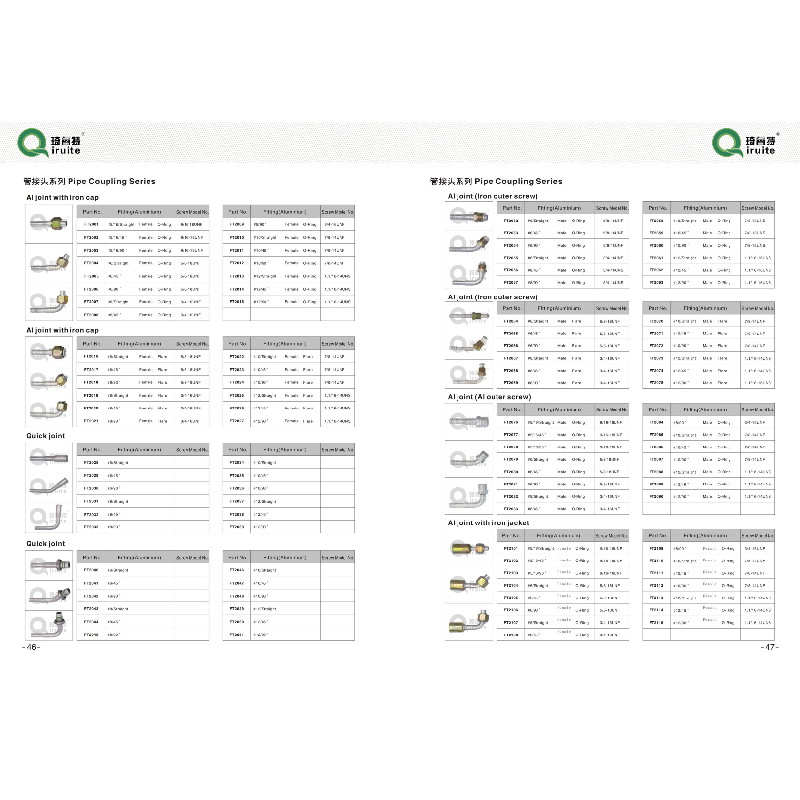40mm solvent welded straight connector for reliable plumbing connections and installations
Understanding the 40mm Solvent Weld Straight Connector
In the realm of plumbing and drainage systems, the selection of proper fittings and connectors is paramount for ensuring efficiency and reliability. One such essential component is the 40mm solvent weld straight connector. This article delves into the features, advantages, applications, and installation processes associated with this valuable plumbing accessory.
What is a 40mm Solvent Weld Straight Connector?
A 40mm solvent weld straight connector is a type of fitting used to join two lengths of pipe together in a straight line. This connector is specifically designed for use with 40mm diameter pipes, which are often found in both residential and commercial plumbing systems. The term solvent weld refers to a method of joining materials where a solvent is used to soften the plastic surfaces, allowing them to fuse together when pressed. This creates a strong, leak-proof bond that is critical in maintaining the integrity of plumbing systems.
Features and Specifications
The 40mm solvent weld straight connector is typically made from high-quality PVC (polyvinyl chloride), a material renowned for its durability and resistance to corrosion. This type of plastic is well-suited for both cold and warm water applications, making it an ideal choice for various plumbing scenarios.
In terms of specifications, these connectors usually conform to industry standards, ensuring compatibility with other fittings and pipes. The straight connector design allows for seamless transitions between sections of pipe, minimizing flow obstructions and potential leak points.
Advantages of Using a Solvent Weld Straight Connector
1. Strong Bonding The solvent weld method creates a strong, permanent connection that is less likely to be affected by temperature fluctuations and pressure changes.
2. Leak-Proof When installed correctly, these connectors provide a leak-proof seal, minimizing the risk of water escaping and causing damage.
3. Versatile Applications The 40mm diameter is commonly used in a variety of applications, including wastewater drainage, venting systems, and irrigation projects.
4. Ease of Installation Installing a solvent weld straight connector does not require special tools; basic plumbing tools and materials are sufficient. The process is generally quick, improving overall project efficiency.
5. Corrosion Resistance Unlike metal fittings, PVC is not susceptible to rust or corrosion, making it a long-lasting choice in both indoor and outdoor settings.
40mm solvent weld straight connector

Applications
The versatility of the 40mm solvent weld straight connector allows it to be used in a variety of plumbing applications. Common uses include
- Wastewater Systems It’s frequently employed in drainage systems, where the connector facilitates the transfer of waste efficiently and effectively. - Rainwater Harvesting These connectors play a crucial role in assembling rainwater collection systems, enabling seamless flow from collection points to storage tanks. - Irrigation Garden and agricultural irrigation systems benefit from the use of 40mm connectors to manage water flow and distribution.
Installation Process
Installing a 40mm solvent weld straight connector is a straightforward process, yet it requires attention to detail to ensure a proper seal
1. Preparation Cut the pipe ends to a square edge using a pipe cutter. Deburr the edges to remove any sharp bits that may hinder a proper connection.
2. Cleaning Ensure both the inside of the connector and the outside of the pipes are clean and free from grease or dirt.
3. Applying Solvent Cement Apply an appropriate solvent cement to both the pipe and the inside of the connector. A uniform layer is crucial for achieving a thorough bond.
4. Joining Push the pipe into the connector, twisting slightly to ensure an even distribution of the cement.
5. Curing Time Allow adequate curing time as per the manufacturer’s instructions before applying any pressure to the system.
Conclusion
The 40mm solvent weld straight connector is an invaluable asset in plumbing systems, offering strength, reliability, and versatility. Its ease of installation and resistance to corrosion makes it a preferred choice for a variety of applications. Understanding its features and proper installation techniques is essential for both professional plumbers and DIY enthusiasts alike. When implemented correctly, this simple yet effective fitting can significantly enhance the performance of plumbing and drainage systems.
-
Ultimate Spiral Protection for Hoses & CablesNewsJun.26,2025
-
The Ultimate Quick-Connect Solutions for Every NeedNewsJun.26,2025
-
SAE J1401 Brake Hose: Reliable Choice for Safe BrakingNewsJun.26,2025
-
Reliable J2064 A/C Hoses for Real-World Cooling NeedsNewsJun.26,2025
-
Heavy-Duty Sewer Jetting Hoses Built to LastNewsJun.26,2025
-
Fix Power Steering Tube Leaks Fast – Durable & Affordable SolutionNewsJun.26,2025

